NOTE: this workshop is actually made up of three possible workshops based on identification of your primary audience.
Preparing for this Workshop
# Design Thinking - for Participation at Mozilla

If We Always Do What We Have Always Done Then We Will Always Get What We’ve Always Got
– Adam Urbanski
Workshop Background & Introduction
This resource provides content, tools and facilitation techniques needed to run a ‘Participation at Mozilla’ Design Thinking Workshop. The accompanying workshop can help teams and contributors create empathetic problem statements and strong hypothesis for solving Participation problems through rapid prototyping.
This workshop process will equip participants with a new set of skills, leading to better quality experiments and ultimately improved strategic success on Mozilla’s mission and project goals.
We borrow heavily from d-school’s Crash Course in Design Thinking which is available under Creative Commons (CC BY-NC 3.0Licence). Web believe human centered design will our encourages better solutions for people, by ensuring empathy at the center of all we do.
Who should take this workshop?
Learning how to run creative, strategic and insightful workshops with outcomes in the vision of a virtuous circle is relevant to:
- Project leads
- Regional community leaders
- Core contributors
- Those invested in community or open education initiatives at Mozilla.
- Decision-makers across the project
Who should facilitate this workshop ?
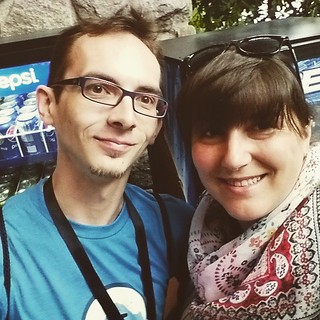
Photo Credit: Ioana
Self-identifying as a ‘Participation Expert’ is not a major criteria for running this workshop, but we suggest the following:
Should have
- Understanding of Design Thinking (you have minimally, taken the 90 minute Design Thinking Crash Course), or have been a participant in this workshop previously.
- Some experience either working with volunteers, or volunteering at Mozilla.
- A belief that Participation provides strategic advantage to Mozilla, and lets us “punch above our weight”.
- Understanding of regional community dynamics.
- Invested interest in helping people.
- Comfort public speaking and/or teaching.
- An interest in building better experiences for volunteers at Mozilla.
- An interest in helping project teams at Mozilla reach their Participation goals.
- A minimum of one Open Source T-Shirt (kidding, kidding).
Nice to Have
- Clear understanding and background working in the open.
- Experience participating in open source communities other than Mozilla.
- Experience managing volunteer, or volunteer communities in any capacity.
- A personal interest in professional development that improves your skills in facilitation and teaching (open to feedback basically).
- An interest in helping improve this workshop through either pull requests, or ‘issues’.
introduction
#Design Thinking - for Participation at Mozilla
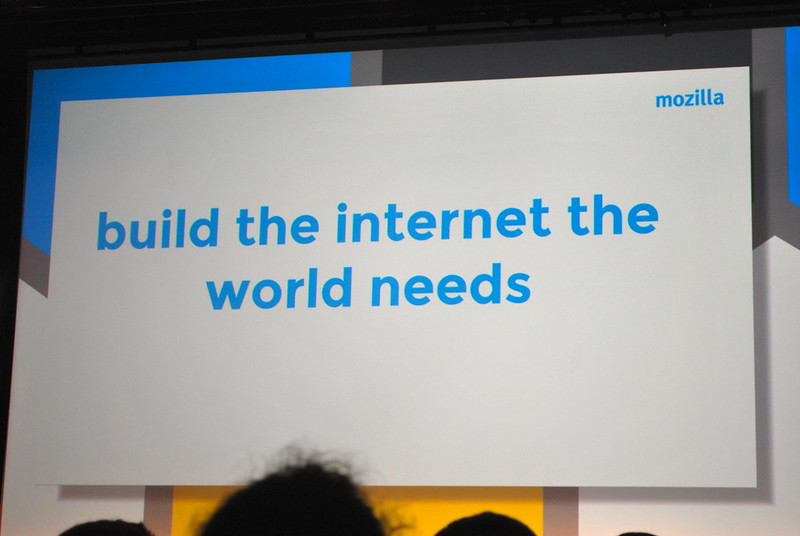 ##Preparing for Success
##Preparing for Success
There are some key decisions and preparation work you should cover before running this workshop.
Inviting People
We’ve covered who this workshop can benefit, but who else should you invite?
The answer is anyone working on, or near Participation at Mozilla: volunteers, staff of any confidence level, experience or curiosity. The more voices the better, the greater diversity - the better.
Research
You’re not expected to be the primary holder of all knowledge and wisdom in a given topic-area, or even an expert in Participation, but you do need to do your homework before you show up. If you don’t already: learn about the functional area, or main topic of focus for Participation.
- Read and document Wiki Pages web pages
- Check out mailing lists and forums to grasp the current status and health of Participation.
- Reach out to contributors who might be interested in sharing stories or insight into what it means to contribute to that particular part of the project.
- Check out the Marketpulse course ‘Interviewing Users for Mozilla’ to learn valuable skills in listening and note-taking.
Materials
- Print Design Thinking Worksheet . It’s available in a few languages. You may only need the first sheet depending on the focus you choose.
- Bring colorful markers or crayons so when people engage in solutions they feel they are in a creative environment.
- Bring sticky notes, should you not have access to a large writing space, but usually these are good to have.
- Whiteboard or Flip-Chart to record notes and group observations.
Workshop Objectives
#Design Thinking - for Participation at Mozilla
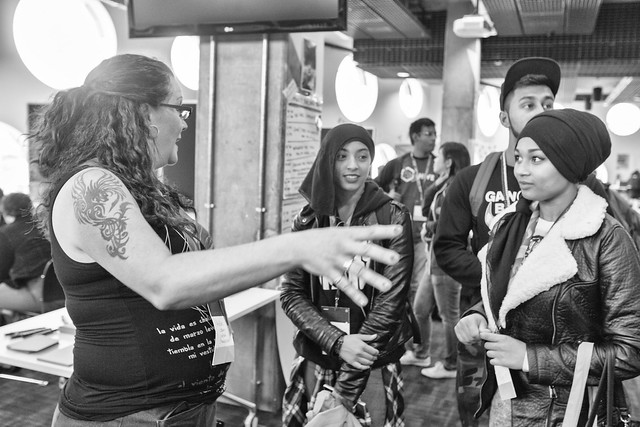
image credit: Mozilla Europe
Below are the steps to run this workshop, please read through this throughly, as there are three separate routes you can take based on what you already know, or learn about your group during introductions.
Workshop Introduction - Lets Go!
If this is your first time running this workshop, or you appreciate a checklist for warming up and preparing your group, here is a suggested introductory workflow:
- Introduce yourself, and feel free to personalize the reasons why you are involved in leading workshops on Participation at Mozilla.
- Introduce Design Thinking as the methodology we’ll be using to help guide the group’s goals for Participation. If it helps, you can emphasize that human centered design is all about people an alignment with our own mission.
- Share your enthusiasm! Encourage participants to embrace a fun, collaborative and creative experience!
- Introduce and briefly touch on the 5 components of Design Thinking: Empathy, Define, Ideate, Prototype, Test.
- Be clear that this course will help people define and solve for problems problem in a new and innovative ways, or help ideate on ideas they may already have.
- Provide scope: explain that you’ll be woking in partners, what materials and that some portions will be timed.
- Provide comfort: there are no right answers, or perfection required.
Icebreaker
This is an opportunity to gauge your group’s strengths and where they need the most support or have energy to innovate. Practice empathy as you listen to the responses, as you’ll be proposing a focus for the next part based on what you hear.
Conduct a quick round of introductions and conversation on success and scope will help set and manage expectations.
- If your group is < 15 people, do a round of introductions (name, from), to share what Participation story brings them to the workshop.
- If your group is > 15 and < 40, do a round of introductions (name, from) and a Tweetable sentence that describes their Participation focus for this workshop.
- If your group is > 40 people, do a round of introductions (name, from) and one word that describes their feeling about being in the workshop today.
Note: ‘<’ means less than, and ‘>’ means greater than
Agree on Participation Focus
Based on the story telling introductions, try to identify the primary focus of your group:
- A group united around a functional area perspective. Described as a group of people who regularly work together on goals specific to a project.
- A group united around a common Participation function. Examples would be: ‘code contributors or QA’.
- A group united around a contribution skill area. This would be Market Research, or Front End Development.
- The mixed bag. People with various backgrounds, interests and focus.
- A group focused on any of the above where participants are a good mix of staff and volunteers.
It’s likely you’ll have some level of mixed participation, but use the majority theme to define your group. Share your observation to the group, and have them agree with the assertion so you can move on to select your strategy.
Tip: For those who may not identify with the main theme, assure them that they are in the exact right place to learn strategies and emerge with skills and ideas that can lend to their more dedicated focus.
Select a Facilitation Strategy
Currently there are three versions of this workshop, for the identified scenarios, but we grateful accept alternate versions, edits and pull requests on items to help improve facilitation of human centered design for Participation.
For Focus #1, #2, #4
Design Thinking for Participation (Full d.school Course): Workshop 1
For Focus #3
Design Thinking for Participation(Partial d.school Course & Group Focus): Workshop 2
For Focus #5
Design Thinking for Participation(Community - Co-Design) Workshop 3
Bring it home!
As a group pick one prototype/hypothesis (if you had more than one) you can agree fits this criteria:
- Realistic & actionable in the near future.
- Give strategic value to Mozilla.
- Provide value to volunteers.
Transfer your learning and agreement using this format, and agree on a way to share (email, posting on a wiki etc).
| Field | Meaning |
|---|---|
| Problem Statement: | |
| Hypothesis: | |
| Context | Relevant Context, background and key facts |
| Success Criteria | How would you judge a successful solution? |
| Stakeholders | Who are the contributors, potential community contacts, staff and users? |
| Scope/Constraints | Scope/constraints |
Wrap Up
At this point, we usually… have run out of time BUT if you do have time. Go through your circle again, and ask people one thing they learned (could be a perspective of another person, or something about designing this way).
Share your thoughts, experiences and ideas for this workshop on Discourse.
objectives.md
Design Thinking for Participation (Full d.school Course): Workshop 1
#Design Thinking - for Participation at Mozilla
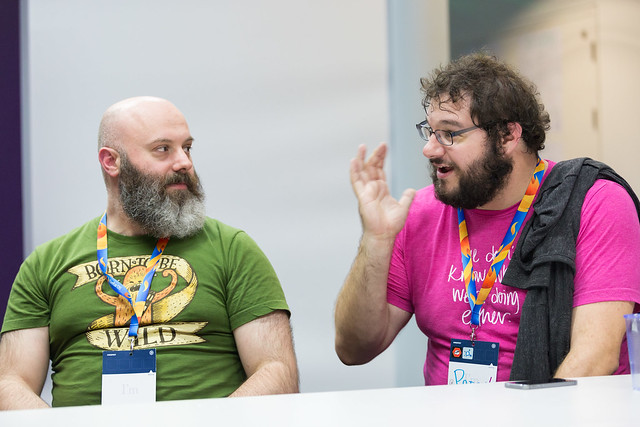 *image credit: Mozilla in Europe
*image credit: Mozilla in Europe
Full d.school Workshop
This facilitation strategy for ‘Human Centered Design for Participation is preceded by the Workshop Outline’, and recommended for scenarios #1, #2, #4 .
Reinforce Outcome
Before starting the full d.school course, reinforce the outcomes you’re after:
- Success is coming out of this understanding what the key problem is that I (or my team) want to solve for.
- Success is having some early prototypes and ideas we’re interested in testing or adopting into existing processes and experiments.
- A list of one or more action items, whatever those first steps towards experimentation might be.
Ask if anyone has questions.
Begin!
With the ‘Focus Statement’ clearly articulated, it’s time to get started. Ask people to pair up, if there is hesitation then pair people in the way you think most makes sense from your observations. Hand out the D-School worksheet(which you prepared in the preferred language prior to the workshop).
Following the directions on the d.school design sheet to bring your group to a final problem statement and prototype. Run this course in it’s entirety.
Building and Documenting Consensus
Once you’ve finished the Design Thinking facilitation it’s time to bring the group’s ideas into center.
As a group ask people who feel they have a prototype to share (it doesn’t have to be everyone). As they share (on a whiteboard or flip chart so people can make suggestions), make notes on:
- Problem Statement(s) Start with 1, which may be refined by the group as they continued to share. If problem statements differ wildly, then just make a list.
- Themes/Trends This could be anything: education, diversity, communication.
- Context What do you need to know about the background? What are the key facts?
- Opportunities These could be recognition of entities, people or existing activities that can add benefit quickly.
- Challenges Identified challenges like time, resources, empowerment. Real issues, not imagined or bias from experience.
- Dependencies
Finishing
Return to the main Workshop Outline heading ‘Bring it Home!’ , for final steps.
Design Thinking for Participation(Partial d.school Course & Group Focus): Workshop 2
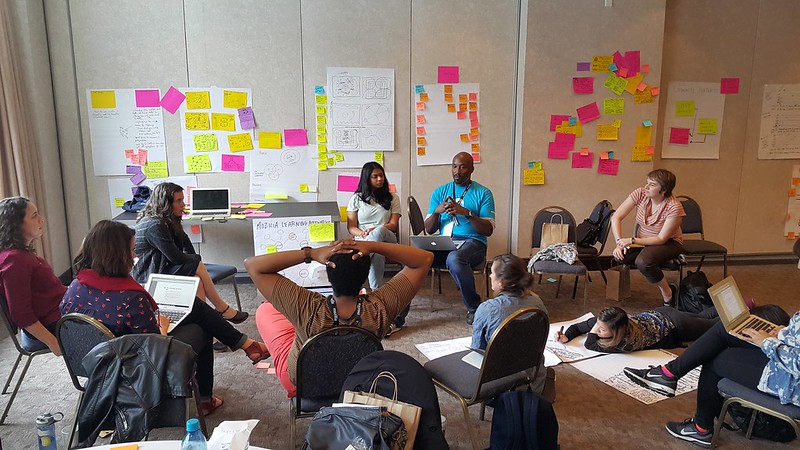 image credit: Andrew Garzia
image credit: Andrew Garzia
d.school + Collaborative (Staff & Volunteers)
This facilitation strategy for ‘Human Centered Design for Participation is preceded by the Workshop Outline’, and recommended for scenario #5.
The scope of focus can be related to functional areas (FFOS, Webmaker), function (code, QA, public speaking), or skillset (Front-End development, Market Research) but the emphasis is on this opportunity for staff and volunteers to gain empathy for each other as a route to truly innovative Participation solutions.
Reinforce Outcome
Before starting the full d.school course, reinforce the outcomes you’re after:
- Success is coming out of this understanding what the key problem is that I (or my team) want to solve for.
- Success is having some early prototypes and ideas we’re interested in testing or adopting into existing processes and experiments.
- A list of one or more action items, whatever those first steps towards experimentation might be.
Begin!
Position yourself at the front of the room with a Whiteboard or Flip-Chart dedicated to capturing the conversation you’re about to have. Create columns for the following:
- Needs
- Wants
- Barriers
- Opportunities
- Ideas
- Ask everyone to self-identify as either a staff member or volunteer. For those who wear multiple hats, ask them to choose just one perspective they feel is most valuable.
- Ask for a representative from each group to act as ‘spokesperson’. This person will be responsible for asking interview questions of the other group.
- Run the d.school steps 1 and 2 with each representative asking Interview questions of the other group.
Tip When you take notes, there’s no need to ‘separate voices’ the voices by staff or volunteer. All context is relevant as Participation feedback.
Build a Problem-Statement Together
Once you’ve finished the interview process, it’s time to bring the group’s ideas into center, and to iterate on a problem statement.
Ask key stakeholders, and others to weigh in on what they heard and together create a problem statement. Set yourself no more than 10 minutes for this discussion.
Tip: You might want to create two primary problem statements, one for volunteers and one for staff (if it makes sense to do so)
Tip:If people get off track, or insist on emphasis that’s out of scope - then create another list called ‘Parking Lot’, to help people feel their interests are being respected without holding up the group.
Build a Hypothesis Together
This next step really depends on where the group is. If a problem statement has been made clearer by someone’s prototype, then that’s a great starting point.
If you end up with 2 or 3 different hypothesis, these are also OK just ask your group to prioritize.
Finishing
Return to the main Workshop Outline heading ‘Bring it Home!’ , for final steps.
Design Thinking for Participation(Community - Co-Design) Workshop 3
#Design Thinking for Participation at Mozilla
 image credit: Mozilla in Europe
image credit: Mozilla in Europe
d.school + Group-Focus
This facilitation strategy for ‘Human Centered Design for Participation is preceded by the Workshop Outline’, and recommended for scenarios #3
Reinforce Outcome
Before starting the full d.school course, reinforce the outcomes you’re after:
- Success is coming out of this understanding what the key problem is that I (or my team) want to solve for.
- Success is having some early prototypes and ideas we’re interested in testing or adopting into existing processes and experiments.
- A list of one or more action items, whatever those first steps towards experimentation might be.
Begin!
With the ‘Focus Statement’ clearly articulated, it’s time to get started. Ask people to pair up, if there is hesitation then pair people in the way you think most makes sense from your observations. Hand out the D-School worksheet(which you prepared in the preferred language prior to the workshop).
Following the directions on the d.school design sheet execute this course until the completion of Step 7. Run this course in it’s entirety.
Build a Problem-Statement Together
Once you’ve finished the Design Thinking facilitation it’s time to bring the group’s ideas into center, and to iterate on a final prototype after discussion.
As a group ask people who feel they have a prototype to share (it doesn’t have to be everyone). As they share (on a whiteboard or flip chart so people can make suggestions), make notes on:
- Problem Statement(s) Start with 1, which may be refined by the group as they continued to share. If problem statements differ wildly, then just make a list.
- Themes/Trends This could be anything: education, diversity, communication.
- Context What do you need to know about the background? What are the key facts?
- Opportunities These could be recognition of entities, people or existing activities that can add benefit quickly.
- Challenges Identified challenges like time, resources, empowerment. Real issues, not imagined or bias from experience.
- Dependencies
Ask key stakeholders, and others to weigh in on what they heard and together create a problem statement. Set yourself no more than 10 minutes for this discussion.
Tip:If people get off track, or insist on emphasis that’s out of scope - then create another list called ‘Parking Lot’, to help people feel their interests are being respected without holding up the group.
Build a Hypothesis Together
This next step really depends on where the group is. If a problem statement has been made clearer by someone’s prototype, then that’s a great starting point.
If you end up with 2 or 3 different hypothesis, these are also OK just ask your group to prioritize.
Finishing
Return to the main Workshop Outline heading ‘Bring it Home!’ , for final steps.
design_thinking_group.md